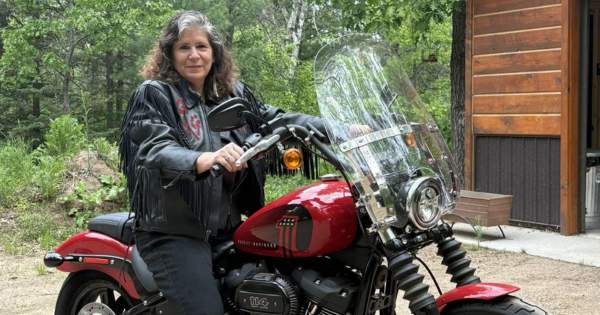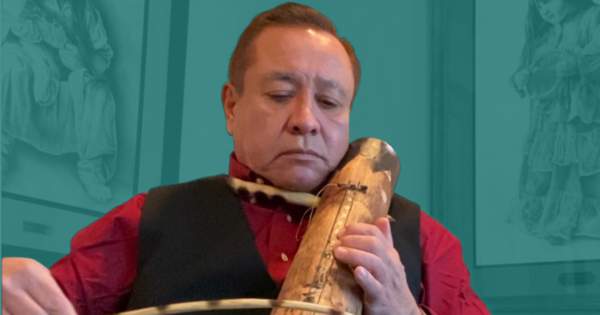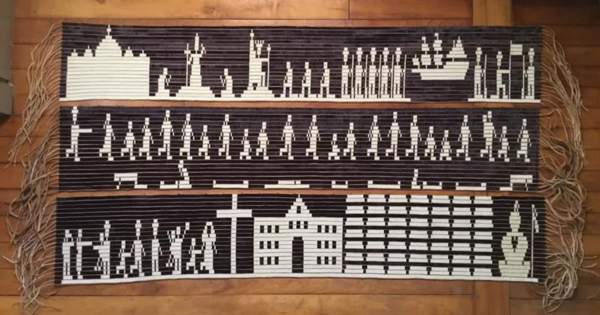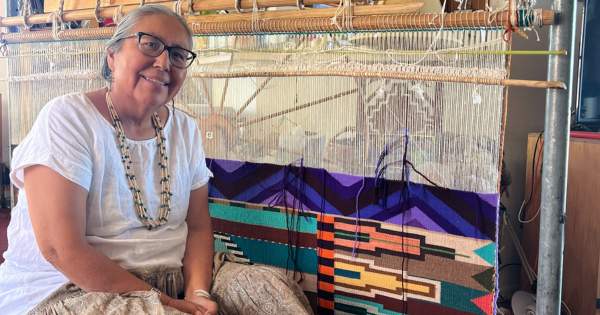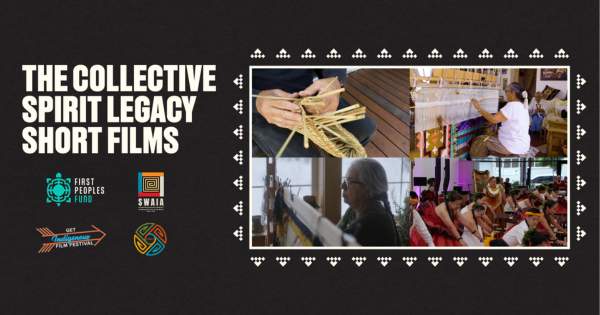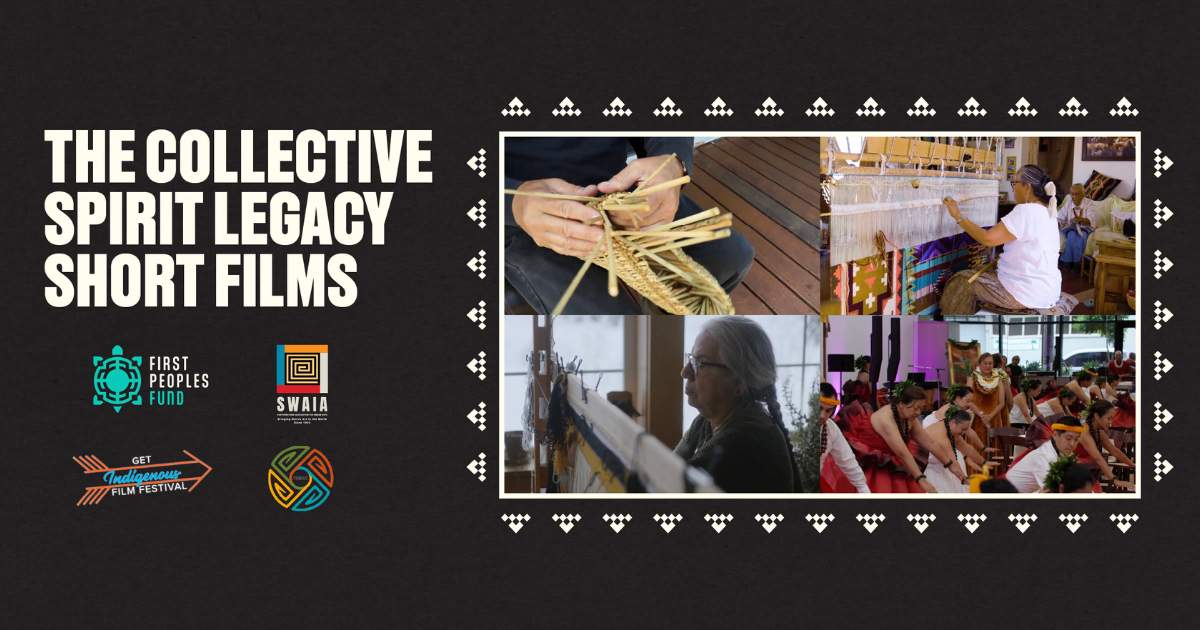
First Peoples Fund Board Members Q&A Series — Ron Martinez Looking Elk
By Sarah Elisabeth Sawyer (Choctaw Nation), Artist in Business Leadership Fellow 2015
Through this series, we highlight the extraordinary people who serve as First Peoples Fund’s board of directors. They are the culture bearers and leaders from national nonprofits within and beyond Indian Country who graciously guide First Peoples Fund and strengthen the Collective Spirit®.
MEET RON MARTINEZ LOOKING ELK
An international award winning artist, Ron Martinez Looking Elk is a traditional potter from Isleta and Taos Pueblos in New Mexico. A graduate of the Institute of American Indian Arts, his expertise includes 20 years of community and leadership development, specializing in building sustainable economic development in Indigenous communities globally. Ron has worked and trained with Indigenous artists, leaders, and organizers from many countries including New Zealand, Japan, Greece, South Korea, Africa, Bolivia, Peru and with tribes throughout the U.S.
Ron is affiliated with national and international networks where he worked or participated as a fellow. A few of these institutions include School of Advanced Research in Santa Fe, the Leadership Institute in Santa Fe, East-West Center in Honolulu, Academy for Educational Development, Washington, D.C., and the Aspen Institute.
A trained facilitator, Ron is currently a lead trainer at First Peoples Fund. He owns and operates Creative Community Consulting. Ron also works with high school students creating leadership development with organizations like the Brave Girls at the Santa Fe Indian School, the Native American Community Academy, the Summer Policy Academy and is the director of an arts-based program called the Arts and Archeology Academy. He also represents over 300 Pueblo artist through his Pueblo Arts Program at the Isleta Resort and Casino.
Q&A
What is your art form? What is your proudest creative achievement with it?
I am a traditional artist. I love all aspects of how our Indigenous ancestors made very functional daily things in works of art. Our expression of what is aesthetically beautiful has given us a cultural worldview that is undeniable.
We have a unique outlook on life and as an artist, I feel I am contributing to the cultural life-ways of Indigenous thought and perspective. I am a traditional Pueblo potter but love to bead, paint, do ledger drawings and dance in my Pueblo community, pow-wow, and hula. My greatest achievement is knowing who I am because of my artistic ability to appreciate my culture.
Who taught you the values you hold closest? What role did that person play in your life and what lessons did you learn from them?
All of my grandparents:
Mom’s dad (Louie) taught me the value of tradition. He was a farmer and spiritual clan member. I know what identity is because of his Pueblo philosophy on nature and spirituality.
Mom’s mom (Sophia) taught me about the value of family/community. I would sit in the kitchen while she was cooking and she would tell me stories about the village and all the people I am related too. I know my 5th and 6th cousins because of her.
Dad’s dad (Joe) taught me to love pow-wow and my Taos culture. He would sing for me, and I would dance. I grew up hungry for more of the Plains culture that Taos Pueblo has embraced over the decades. This is where my creativity and artistic skills come from.
Dad’s mom (Betty) taught me the value of leadership. She was the first Pueblo woman to direct health care programs in the state of New Mexico. We always traveled with her and learned how to interact with local communities.
Each one of them influenced my life and gave me my medicine, my personal strength.
What professional accomplishment do you believe says the most about who you are and what’s important to you?
Being an ambassador in the Ambassadors Program for Americans for Indian Opportunity (AIO) is what stands out the most. I have gained a tremendous amount of professional development because of my participation in the Program and working for the organization for the past 18 years.
Because of the mission and dedication to tribal and global Indigenous communities, I have been able to create meaningful changes in all areas of social, political, economic and leadership development for our Indigenous brothers and sisters that support the traditional values, culture, and identity. This has led me to branch out and work with many Indigenous organizations who are also committed to sustaining the lifeways and beliefs of tribal communities, programs, and leadership.
How long have you served on the First Peoples Fund board and why did you get involved with this organization?
I have been on the First Peoples Fund board since 2011. I got involved with FPF because of my relationship with Lori (Pourier) through the Ambassadors Program. [Lori was also an Ambassador.] The values of AIO and FPF have strengthened the bond and values of all the participants who have gone through the Program.
I was an International Community Development Specialist at the time with AIO. Lori knew of AIO’s values, the 4-R’s (Relationships, Responsibility, Reciprocity, and Redistribution) and asked me to come and speak about how values are a core part of developing a good business plan. Since that time with FPF, I saw the direct impact FPF and its programs had on their fellows, and I knew this organization, mission, and values were amazing. All I wanted to do was be a part of it.
What do you wish other people knew about First Peoples Fund?
I wish people could understand and appreciate the amazing philosophy and importance of building a strong, personal, and professional community around traditional values. Most folks see them as separate things, Indian and non-Natives alike.
Our greatest contribution in Indian country is how we bring our traditional values to the forefront of professional arts development and create a strong foundation to build a sustainable economy for the family, tribe, and the greater American economic system of exchange.
How do you see First Peoples Fund changing lives and communities?
I have seen FPF and its programs bring new life into places where it seems like things are in darkness. Many tribal peoples do not feel they have the capacity or understanding of how to be good entrepreneurs.
We have reminded them that our ancestors were amazing economists and produced many life-supporting items that the global community still benefits from today. This kind of impact is based on individual achievement and growth from a micro level. This builds and creates substantial benefits for the economic, social, and political growth of the community.

